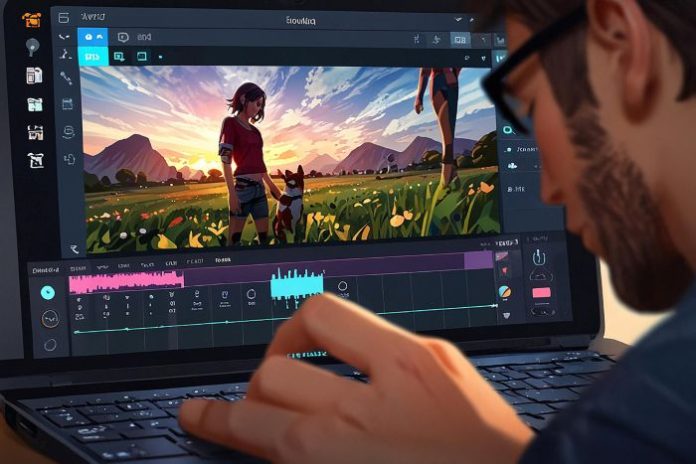The battle for attention is won or lost almost instantly. A video has a narrow window – often two or three seconds – to signal relevance, quality, and intent before the viewer scrolls past. For that reason, the opening moments are treated by leading creative studios almost as a standalone product. Teams that specialize in animated explainer videos and brand films, like Infocandy, build those first seconds with the same care they apply to the entire narrative arc.
The result, when done well, is not simply a “nice intro”. It is an engineered entry point that earns permission for everything that follows.
Key Takeaways
- The opening seconds of a video are crucial for capturing viewer attention and must convey relevance and intent.
- Professionals approach openings strategically, defining clear objectives to avoid generic starts.
- Key elements include a strong first frame, an impactful first line, and carefully crafted rhythm and pacing.
- Sound and on-screen text should integrate seamlessly to support the visual narrative, especially in silent viewing contexts.
- Creative studios adapt openings for different channels, using testing and professional judgment to enhance performance.
Table of contents
- Strategy First: What The Opening Has to Achieve
- Designing A First Frame That Works on Mute
- Script Craft: The First Line As A Decision Point
- Rhythm And Pacing: Fast, But Not Chaotic
- Sound As A Strategic Element, Not An Afterthought
- On-Screen Text For A Multi-Context Reality
- Contextual Variations: One Story, Several Openings
- Iteration, Testing, And Professional Judgement
Strategy First: What The Opening Has to Achieve
Professional studios do not begin with “cool shots”. They begin with a strategic question: what must the viewer understand and feel in the first few seconds?
Typical objectives are clear and narrow:
- Recognize themselves or their situation
- Experience a controlled sense of tension or curiosity
- Sense that the brand understands a specific problem better than others
Only after this is defined do art direction, script, and motion design start to take shape. A video intended to reassure a corporate buyer will open very differently from one aimed at early adopters of a new consumer app. The aesthetic may be similar; the intent is not.
This early alignment step is what prevents the opening from becoming generic. It is also where creative directors push back on vague briefs. If the expected outcome is “more engagement”, the result is usually noise. When the goal is precise, the first seconds can be precision tools.
Designing A First Frame That Works on Mute
In most feeds, videos autoplay silently. The visual impression therefore carries the opening on its own. Creative studios treat the first frame almost like a key visual in a campaign.
A strong opening frame typically has:
- A single dominant point of focus
- Clear contrast in color or shape against the background
- Immediate legibility at small sizes and on mobile screens
Motion begins with intent. Rather than a soft, unfocused drift, there is a clear action: an unexpected transition, a sharp reveal, a visual contradiction that needs resolving. The viewer should be able to understand “something is happening here” even before reading a word or hearing a voice.
This is one reason high-quality explainers feel different from template-based videos. The hierarchy of information is designed, not left to chance.
Script Craft: The First Line As A Decision Point
The first spoken line is treated as a decision point, not a warm-up. It has to justify the viewer’s choice to keep watching.
Effective openings avoid abstract claims or broad trend statements. They move directly to a concrete tension:
- A specific pain point
- A counter-intuitive observation
- A concise promise framed in practical terms
For example, “Most teams lose hours every week just aligning on the same information” is far more efficient than “In today’s fast-paced digital world, collaboration is more important than ever.” The former situates the viewer immediately; the latter wastes time on clichés.
Creative copywriters approach these lines with the discipline usually reserved for headlines. Drafts are written, tested aloud, and edited until they sound natural at pace – not only when read slowly on a page.
Rhythm And Pacing: Fast, But Not Chaotic
Experienced motion and film creative studios teams pay close attention to rhythm. The opening seconds are tightly paced, but not frantic. The aim is momentum, not anxiety.
Common structural patterns include:
- A rapid sequence of micro-shots establishing the problem state
- An immediate contrast between “before” and “after”
- A visual rhythm that syncs with the music from the first beat
Crucially, the eye is never asked to track too many things at once. Primary motion and primary information are aligned. This is where professional work stands apart from over-animated content: restraint is built in. Movement is used to guide attention, not to demonstrate how much can be animated.
Sound As A Strategic Element, Not An Afterthought
When sound is enabled, it acts as a second hook. Studios design the opening audio with intent, knowing it may be the first sensory cue the viewer registers.
Key practices include:
- Using a distinctive sonic signature or impact at the very start
- Choosing music that establishes tone immediately, without a long build-up
- Timing voiceover entry to coincide with a visual resolution or key reveal
Even in silent autoplay environments, this discipline matters. Once a viewer re-watches with sound or encounters the asset in a different context (for example, in a presentation), the audio experience reinforces the original impression rather than competing with it.
On-Screen Text For A Multi-Context Reality
Because a significant portion of viewing happens on mute, on-screen text is no longer a supplementary feature. It is a core part of the opening toolkit.
Professionally built openers use text to complement, not duplicate, the voiceover. Typical choices:
- Short, high-impact phrases rather than full sentences
- Clear emphasis on outcomes and value, not internal terminology
- Synchronization with motion cues so the words feel integrated, not pasted on top
This approach ensures that a viewer skimming through a feed can still take away a meaningful message, even without audio. It also supports accessibility and search, which increasingly matter for long-term asset performance.
Contextual Variations: One Story, Several Openings
Creative studios working with sophisticated clients rarely deliver a single, rigid version of a video. The core narrative remains stable, but the opening seconds are often adapted to different channels and use cases.
Examples include:
- A direct, product-led opening for a homepage
- A problem-first, slightly more disruptive opening for paid social
- A version tailored for investor or partner presentations, with greater emphasis on scale or market context
These variations reflect an understanding that attention conditions differ. A captive audience in a boardroom does not need the same hook as a distracted commuter scrolling on a phone. Designing purpose-built openings for each scenario is more work, but it preserves brand coherence while maximizing effectiveness.
Iteration, Testing, And Professional Judgement
Finally, studios that consistently produce high-performing openings treat them as hypotheses, not certainties. Where possible, they test different cuts, hooks, or thumbnails in controlled environments and feed performance data back into their creative process.
At the same time, professional judgement remains central. Teams that have delivered dozens of explainers and brand films – including specialists in this domain such as Infocandy – develop an instinct for which ideas are likely to fail in the first seconds, and which have a genuine chance of holding attention.
That combination of structured process, data, and creative experience is ultimately what separates a video that “plays” from a video that is actually watched. In a landscape where attention is paid in seconds, those first moments are not a stylistic flourish. They are a critical business asset, and creative studios now design them accordingly.











